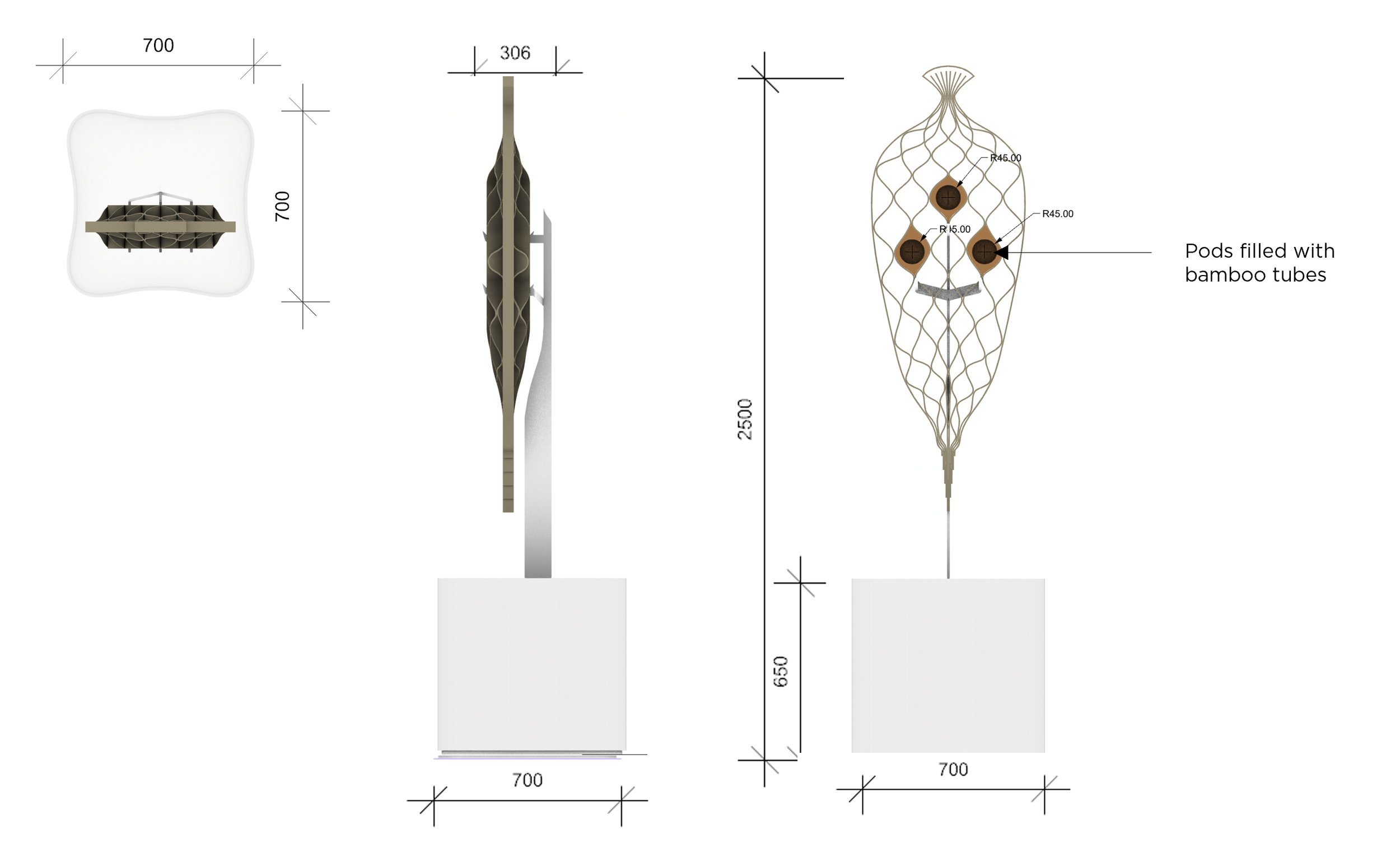Leaf-cutter Bee Totem
Type of Totem:
Corporate Totem
Target Species:
Resin Bee and other Leaf-cutting bees
Location:
26 Cairns Street, Brisbane, Australia
Story:
This Eco-Active Totem is designed to provide a home for bees of the Megachilidae family. The design is inspired by the intricate leaf venation patterns, reflecting the natural geometry and flow found in plant leaves.
Members of the Megachilidae family, including leafcutter bees and mason bees, are important solitary pollinators that contribute significantly to both natural ecosystems and agricultural productivity. Unlike social honeybees, these solitary bees build individual nests in small cavities, often in hollow stems, wood, or soil.
Images by @jennleayr and @ihmelbourne from left to right.
Many native bees from both Singapore and Australia, including leafcutter and resin bees, belong to the Megachilidae family and exhibit similar "masonry" nesting behaviors. These bees use mud or resin to build their nests in pre-existing cavities, such as holes in wood, cracks in rocks, or hollow stems.
The Broad-headed Leafcutter Bee (Megachile laticeps) lines cavities for nesting with leaf discs cut from plants such as the Rose (Rosa spp.), Petai Laut (Dendrolobium umbellatum), and Red Mempat (Cratoxylum cochinchinense). Unlike carpenter bees, leafcutter bees cannot create their own cavities and therefore benefit greatly from pre-existing cavity structures provided by totems. These bees collect pollen from numerous flowers, especially from plants in the Bean family.
The Eco-Active Totem replicates these natural nesting environments by providing specially sized cavities and tunnels that protect bees from predators and harsh weather, while supporting their vital pollination role.
Megachilidae bees are found worldwide, including in urban and rural areas across Australia and Southeast Asia. Their role in pollinating native wildflowers, orchards, and vegetable crops makes them crucial for ecosystem health and food production.
By providing safe nesting sites through this Totem, we support their populations in increasingly urbanised landscapes, helping to maintain biodiversity and the resilience of local plant communities.
Key Design Features
Pods Filled with Bamboo Tubes: Pods are designed to house bamboo tubes. Bamboo tubes provide a variety of diameters to accommodate different Megachilidae species with varying nesting preferences.
Leaf Venation-Inspired Structure: The external design mimics leaf vein patterns, which create natural spaces for pods to be filled.
Planter Base: The base features integrated planters, when filled with soil and native vegetation, help stabilize the totem while supporting local flora and insect life. The soil acts as a natural counterweight, anchoring the structure against wind and external forces.
Each Totem protects wild habitat through a donation to a wilderness conservation charity. A donation matching this Totem's cost will contribute to preserving the habitat of native bees in Queensland, managed by Bush Heritage Australia
Sponsors:
Delta Australia Holdings
Having delivered one of Brisbane’s most celebrated buildings, Riparian Plaza, Delta Australia Holdings is proud to lead the team behind 26 Cairns Street Kangaroo Point.
Team:
Design: WOHA: Richard Hassell, Evanne Kok , Chong Siew Way, Lin Bolt
Ecology: bioSEA: Anuj Jain
Technology and Fabrication: Systmz: Ng Joo Kok, Sean Liew
Integrated Greenery: GWS Living: Zac Toh, Sylvia Toh






